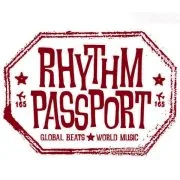It’s not often I can say that reviewing an album made my day, but in the case of Senégalese multi-instrumentalist Diabel Cissokho’s latest release, Tambacounda Express, it certainly did! The album, which, as Diabel affirmed during a chat we had at Womad UK this Summer, takes its name from the town where he was born in Senegal, is his fourth production – and it shows.
Diabel recorded the album “a little bit everywhere – Senégal, UK, France, Austria, then put everything together”. He explained that he “went to all those places because he had friends there who could bring a lot of flavour into the music. There are more than thirty people on it – Senégalese, Malian, French, Austrian, Morrocan and more”. In addition, he plays kora, guitar and n’goni [a type of lute], but the kora is his main instrument. He confessed that “I definitely sing a different way when I play kora or guitar, because they give a different feeling to me”.
As a matter of fact, there is an authority to his playing that draws you in with its inventiveness and intensity. His voice has a quality that leaves you wanting more. Add to this the fine instrumental playing (kora, n’goni and guitar from Cissokho, plus a host of fabulous guest musicians) and you have an album that is a joy to listen to from start to finish. From the Blues rock opening of Gorée Island, to the fade-out of the final track Natta, I was mesmerised. It bursts with a variety of soundscapes, each leading to the next with no letup in quality, and ranging from lilting traditional Mandinka pieces such as Yereko, to the drama of more orchestrated dance tracks like Dimbaya.
The album begins with a piece of history – a lament for the people incarcerated at Gorée Island, just off the coast of Senégal. Used by traders as a holding station for slaves before transporting them to the colonies, it has become a notorious symbol of the cruelty of slavery. Cissokho’s richly distinctive and charismatic voice carries this tale forward with great momentum, to its conclusion of a clapping chorus. Kélékelé comes next, using a traditional kora theme, improvising in style on this beautiful, detail-rich instrumental. Touba has a more orchestral sound to it, characterised by Cissokho’s crisp playing style. This track sets off at a racy tempo and doesn’t let up until the end. There’s a fabulous extended solo section that makes it impossible to keep still.
Korafo follows, a rippling trip of plucked strings with tumbling vocal lines. Sama Kharite begins with a beautifully sonorous introduction, and with its rolling lilt it’s one of those grooves you don’t want to end – and then it leaps into a fast-paced Mbalax-inflected section. Nanio’s retro guitar introduction is reminiscent of the days of Orchestre Baobab, and there are so many references here it’s difficult to keep pace. The more acoustic Barro, rolls along with a delightful simplicity, followed by Yaguena, again with a fuller band sound and some delightful guitar riffs, tumbling amongst vocal phrases, plus a fabulous kora solo. Boumoulendem has an intense, emotional quality with its clicky calabash rhythms and ubiquitous falling lines. Senégal is a quiet, instrumental piece, leading into the title track Tambacounda Express, featuring some tasteful blues harmonica playing. Tambacounda is the area of Senégal that Cissokho griot family hails from, a melting pot of rich musical traditions.
Maman Africa just rolls along with its funky groove, delicately punctuated with effected kora riffs. Yereko is a moody, lilting song that showcases the expressiveness of Diabel’s voice. Dimbaya begins with a Bombino-style guitar riff, launching straight into a fast-paced race of choruses and djembe breaks.
Natta, is the stylish final track of the album, and as it faded away my first reaction was to go back to the beginning and listen all over again. Every one of the fifteen tracks is a winner – there are no album fillers here. What’s more, Diabel was keen to point out that “the songs are true story songs. They are based on what we see around us. We say we are griots, storytellers. When we sing, we don’t make up stories. So all of the events are things that happened in the past, things that people don’t really know about. As griots, we can remember. It’s part of our oral history, so we can tell how it was; this is what happened. Also, we tell of things that happened when no one was there. In this way, we can pass on messages to the world to say ‘you may not know, but this is happening today’.”
Tambacounda Express is the kind of album you put on repeat – a classic in the making!


